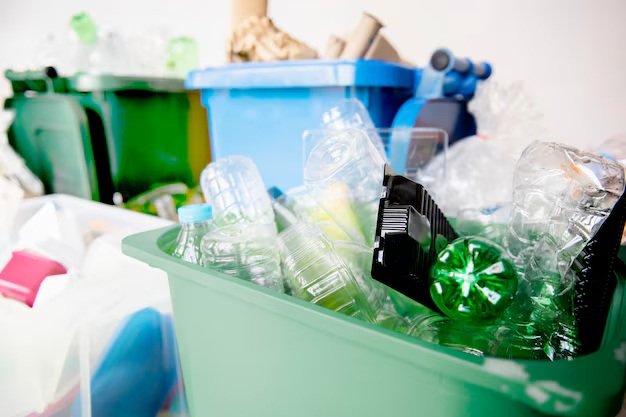Healthcare Waste Milestone Shows Scale and Limits of Advanced Recycling for Medical Plastics
In August 2025, a recycling company and a local recycler announced they had processed more than one million pounds of medical plastics — a number that made headlines and gave people who worry about hospital waste a reason to cheer. Brightmark and Lewis Salvage say that their partnership has diverted material that would otherwise have gone to landfills or incinerators, and that their technology can handle mixed and difficult-to-recycle medical plastics. “Surpassing the 1-million-pound mark is more than just a number; it’s proof that advanced recycling technologies can make a real impact on the health care industry’s plastic waste challenge,” Brightmark’s CEO said.
That achievement is real and tangible: one million pounds is roughly 454 metric tonnes of plastic moved out of the waste stream and into a recycling process. But the milestone is also useful as a reality check. Health care creates vast streams of waste every day, and most of it is not hazardous — meaning it could, in theory, be captured for recycling rather than burned or buried. According to the World Health Organisation, about 85% of the waste produced by health-care activities is general, non-hazardous waste; the remaining 15% is hazardous and requires special handling. That split matters because it determines what can be safely collected and recycled.
The one-million-pound story shows that advanced recycling can work in pockets — in regions with the right partners, logistics, and a steady feedstock. But it does not, by itself, prove the system can scale quickly enough to meet the full size of the problem. The health-care sector produces thousands of tonnes of plastic globally every day, and turning isolated wins into a reliable, low-risk, and low-carbon industry is a much bigger task.

The Promise and the Limits of Advanced Recycling
Advanced recycling — sometimes called chemical recycling or plastics renewal — promises to take mixed, contaminated, or multilayer plastics that mechanical recycling struggles with, and convert them into feedstock for new products. For hospitals and device makers, that idea is powerful: it could close loops for items that today are single-use for infection-control reasons.
Industry groups and technical councils have benchmarked that promise and begun building guardrails. The Healthcare Plastics Recycling Council (HPRC) has published guiding principles and impact work that position advanced recycling as a potential complement to mechanical recycling, while urging strict safeguards for human health, chain of custody, and truthful claims. HPRC’s impact work highlights both the potential to divert material and the practical barriers—collection, sorting, contamination, and the need for reliable end markets.
At the same time, independent assessments are raising questions about environmental performance, emissions, and chemical by-products. A report released in 2025 by Health Care Without Harm examined chemical recycling for the health sector. It stressed the importance of evaluating toxic outputs, carbon footprints, and economic viability before adopting new technologies at scale. The authors recommended careful scrutiny to ensure any recycling pathway is genuinely safer and greener than existing options.
Putting those pieces together shows a familiar pattern: advanced recycling fills clear technical gaps, but it brings trade-offs. Some chemical processes require high energy inputs or produce residuals that must be managed. The environmental and health advantages, therefore, depend on the quality of the feedstock, the specific technology used, the energy sources employed, and how the system handles rejects. HPRC’s own research estimates that a large volume of high-quality, non-hazardous medical plastic enters municipal waste streams daily, and that only a small share is currently recycled — leaving both opportunity and a difficult logistics challenge.
Below is a short table showing a few key numbers that help weigh promise against scale. The figures come from public reports and independent studies and are shown here so readers can see the order of magnitude.
| Metric | Number (approx.) | Source |
|---|---|---|
| Share of health-care waste that is non-hazardous | 85% | According to WHO, 2024. |
| Recycled share of high-quality medical plastic in some estimates | 14–18% | HPRC white paper (estimate cited), 2022/2024. |
| Plastic processed in Brightmark–Lewis Salvage milestone | ~454 metric tonnes (1,000,000 lb) | Brightmark/Lewis Salvage announcement, 2025. |
| Case hospital plastic generation (Meilahti, Helsinki) | 370 tonnes/year | LUT University LCA case study (Meilahti hospital), 2025. |
| Emissions difference (example from Meilahti study) | Chemical + mechanical recycling scenario: 220 t CO₂-eq vs baseline incineration 522 t CO₂-eq | Meilahti LCA, 2025. |
These numbers show two things clearly: first, recycling can cut emissions compared with some current disposal practices in specific contexts; second, the total volume of medical plastics is so large that a few pilot projects do not yet move the needle at the sector scale.
Real Hospitals Testing Solutions
Hospitals are not waiting for a perfect, sector-wide solution. Across North America and Europe, health systems and recyclers are testing programs that reduce landfill and incineration and build the logistics needed for bigger change. Houston Methodist, for example, launched a pilot called “Choose Pink” in partnership with an industry recycler to collect post-patient PVC items — nasal cannulas, oxygen tubing, masks and similar items — from an outpatient centre and send them to a compounder for reprocessing into industrial and consumer goods. Jason Fischer, director of Houston Methodist’s Office of Sustainability, framed the work plainly: it gives clinical staff a way to divert material from landfills while keeping patient safety central.
In Europe, researchers have measured what happens when a large hospital tests more ambitious recycling mixes. A 2025 life-cycle assessment of Meilahti hospital in Helsinki used detailed data from 2023 to compare three routes: the status quo (heavy reliance on incineration), improved mechanical recycling, and a combined chemical-plus-mechanical approach. The study found that the combined approach achieved the highest recycling rate (about 51%), lower net emissions (around 220 tonnes CO₂-eq), and a substantial emissions reduction compared with incineration in that context. But the same study warned of practical constraints: contamination risks, higher energy for sterilisation, and sensitivity to sorting efficiency. In short, the approach can work, but it depends on strong collection, careful separation, and energy considerations.
Those hospital examples are not isolated PR exercises. They reveal the practical steps a hospital must take: establish clean collection streams at the point of use, dedicate staff time or automation to avoid cross-contamination, ensure transport and storage that preserve material value, and partner with recyclers or processors who provide transparent environmental data. HPRC’s pilots — from Houston to several European hospitals — repeatedly identify the same problems: volume, contamination, and market certainty for the recycled output. Where hospitals have succeeded, it is because they solved those logistical challenges first and treated recycling as an operational program, not just a sustainability poster.
What Health Systems Must Do Next
If health systems want to move beyond milestones and toward systemic change, the path is practical and layered. First, hospitals should prioritise waste prevention: buying fewer single-use items when safe alternatives exist and using procurement to signal demand for recyclable materials. WHO and multiple expert groups stress waste minimisation as the single most effective step to reduce downstream harm.
Second, hospitals must invest in segregation and collection. The Meilahti study is instructive because it shows how much of the environmental benefit depends on separating clean, non-hazardous plastics at source — before they mix with contaminated waste. That is operational work: revised bin systems, training for clinical teams, and logistics that keep material clean and dense enough for transport. HPRC’s Houston pilot and the European case studies both show that scaling collection across multiple facilities creates the volume that makes recycling economical.
Third, decision-makers need to demand transparency from recycling partners. Advanced recycling covers many technologies, and not all are equal on carbon, pollutants, or chemical outputs. Reports by independent groups recommend clear environmental and health reporting, chain-of-custody guarantees, and third-party audits so hospitals are not simply outsourcing a problem. Health Care Without Harm’s report argues for careful assessment of toxic outputs and lifecycle emissions before hospitals commit large volumes to chemical processes.
Finally, policymakers and funders must recognise that early pilots need support to become mainstream. Grants, public procurement rules that reward verified recycled content, and regulatory clarity on what counts as safe recycling will lower risk for hospitals and recyclers. Where governments and health systems work together, pilots become programs. The Choose Pink pilot at Houston Methodist shows how a health system and a polymer company can design a route from post-patient waste to finished product, but the model needs replication across geographies and product types to matter at scale.
A practical checklist for hospital leaders comes down to three lines: prevent what you can, separate what you must, and verify what you recycle. That is not glamorous, but it is how the sector will turn milestones into everyday practice.
Learn More: Eco-Friendly Practices in the Healthcare Industry
Conclusion
The one-million-pound announcement is worth celebrating. It shows ingenuity, partnership, and that technical hurdles can be overcome in real settings. At the same time, independent studies and global health guidance show that we are still building the playbook: advanced recycling can be part of a cleaner future for health care, but only if it is matched with better procurement, stronger separation at source, clear environmental checks, and policies that convert pilots into reliable systems. For now, the milestone is a bright signal — not the finish line.







